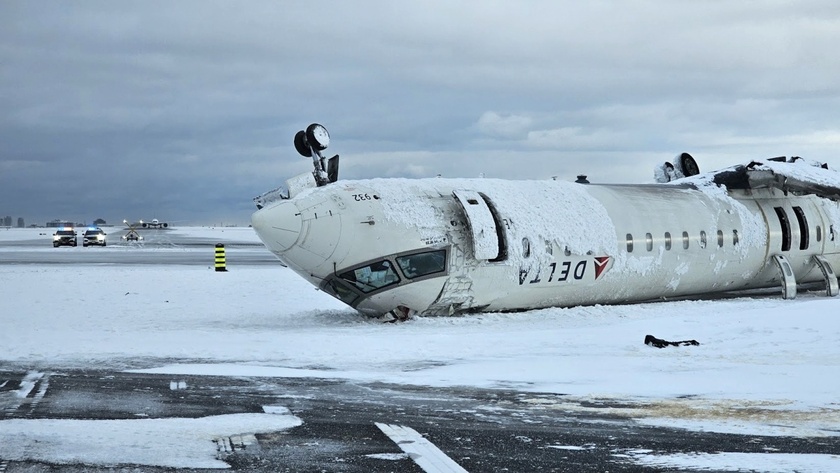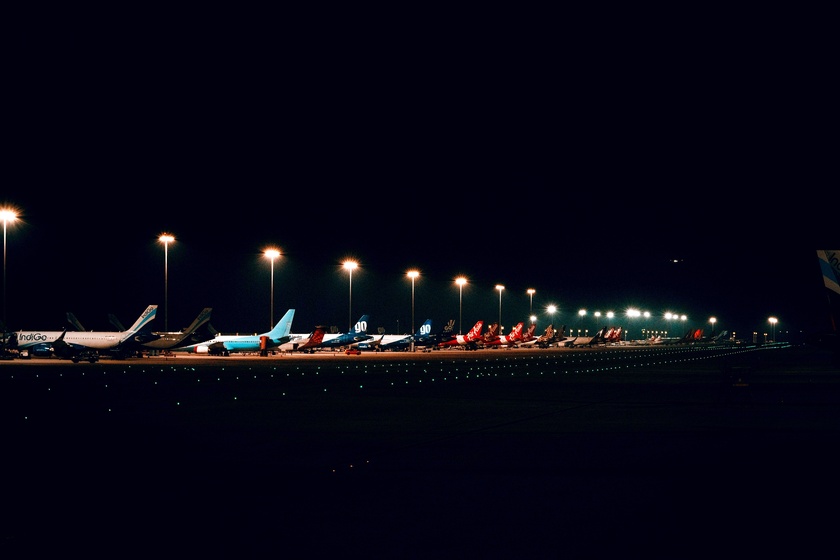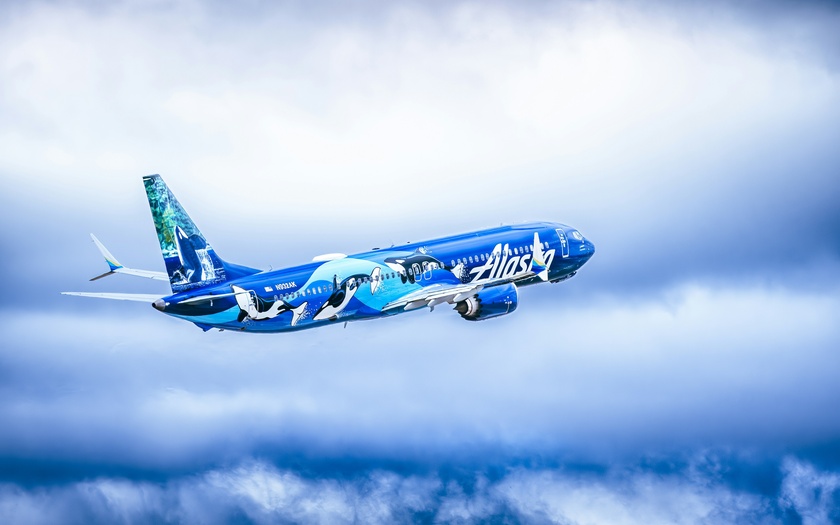
In today's polarized climate, it has become almost instinctive to attribute aviation accidents to either DEI-driven hiring practices or efforts to improve government inefficiencies, depending on which side of the political spectrum you lean toward. However, while these debates are often heated, they may not always be grounded in fact. The reality is that aviation is an incredibly complex system, involving numerous factors that contribute to incidents and accidents.
While it is understandable that emotions are high and that political narratives often shape public perception, it is essential to base our conclusions on factual, verifiable information. In the case of the Delta Connection CRJ-900 operated by Endeavor Air, which crashed upon landing at Toronto Pearson International Airport, preliminary evidence suggests that the cause of this accident had little to do with DEI or DOGE.
Thus, before rushing to judgment, let’s examine what actually happened, using open-source information and expert analysis, to piece together a probable cause. Ultimately, the Transportation Safety Board of Canada (TSB) will release its official findings, but we can already draw important insights based on what is currently known.
Get Involved: Do you believe structural fatigue played a role in this crash? Could crosswind mismanagement have been a factor? Please share your thoughts in the comments below.
On Aviation™ Note: Once again, we must underscore the need for peer-reviewed research to determine whether DEI initiatives have impacted aviation safety trends. What we do know is that becoming an airline pilot remains one of the most rigorously regulated professions in the world, with stringent training and qualification requirements reviewed every six months. Additionally, as financial pressures mount on airlines, maintenance concerns have become an increasingly relevant factor in aviation safety investigations. For this accident, investigators will be scrutinizing maintenance records to determine why the right wing detached so easily upon impact.
With that in mind, let’s examine the known facts surrounding this incident.
What Happened?
On February 17, 2025, a Delta Connection CRJ-900 operated by Endeavor Air suffered a hard landing at Toronto Pearson International Airport (YYZ). The aircraft was carrying 80 passengers and crew, and while there were no fatalities, 18 individuals sustained injuries.
Key Facts About the Incident
- The aircraft was on final approach to Runway 23 at 2:12 PM local time.
- Winds at the time of landing were reported as 270° at 23 knots, gusting to 33 knots, creating a right-quartering crosswind.
- The aircraft landed hard, causing the right wing to detach, flipping the aircraft onto its roof.
- The crash resulted in a fire, but prompt emergency response ensured all passengers were evacuated safely.
- There was blowing snow reported at the time of landing, but it was less than 1/8 of an inch.
One of the most critical questions investigators are asking is: Did the aircraft impact the runway with such force that it snapped the wing, or was there an existing structural weakness?
Analysis of the Approach and Landing
From the available ADS-B flight data, we can reconstruct the aircraft’s final moments before impact.
Was the Approach Stabilized?
A stabilized approach is a critical factor in safe landings. If an approach is unstable—meaning high descent rates, improper speeds, or last-second corrections—it increases the risk of a hard landing.
Examining preliminary flight data, the descent rate in the final moments was:
- 576 feet per minute at 1,725 feet altitude.
- 928 feet per minute at 110 knots (ground speed).
- 672 feet per minute just before touchdown.
A descent rate of 1,000 feet per minute or higher at low altitudes is generally considered unstable, but this data suggests a mostly stabilized approach.
However, the final data point indicates a sudden increase in descent rate. This "sinker" effect—a rapid descent right before landing—may have led to an excessive impact force on touchdown.
The Role of Crosswind Conditions
Crosswind landings require precise handling. In strong gusting winds, pilots must: Keep the upwind wing (right wing, in this case) slightly lower to prevent drift; Use opposite rudder to keep the aircraft aligned with the runway; Manage power carefully to avoid a sudden drop in descent rate.
If power was reduced too early, or if gusts shifted suddenly, the aircraft could have suffered a momentary loss of lift, resulting in a sudden, hard impact—a possible contributing factor.
Structural Integrity: Was the Wing Already Compromised?
A major concern in this crash is how easily the right wing detached upon impact. Investigators will be reviewing: Past maintenance records of the aircraft; Structural fatigue or previous damage to the wing; Material failure under stress conditions.
In a similar incident in Scottsdale, Arizona, a Learjet suffered a landing gear collapse, and investigators later found a pre-existing maintenance issue that contributed to the failure.
Was something similar at play here?
The Runway Condition Factor
Another area of focus is the runway condition at the time of landing. The Runway Condition Report (RCR) was rated 5-5-5, meaning the runway was mostly clear with some light frost or snow. However, blowing snow across the surface can create visual illusions, potentially making it difficult for pilots to judge height and distance before landing.
This visual disorientation, combined with gusting winds, may have led to a misjudged flare (the moment before touchdown), increasing the impact force.
Conclusion
Based on available data, the possible contributing factors to this accident are: A sudden sinker effect in the final seconds before landing; Gusty crosswinds affecting the flare and touchdown; Possible pre-existing structural weaknesses in the right wing; Visual disorientation caused by blowing snow.
There is no evidence at this time to suggest that DEI hiring practices or DOGE inefficiencies efforts played a role in this accident. Instead, standard aviation safety factors—such as weather, aircraft integrity, and pilot inputs—appear to be the primary contributors.
On Aviation™ Note: While the public debate around DEI and government efficiency in aviation continues, we must remain grounded in factual analysis rather than political narratives. The NTSB’s final report will provide a definitive cause, but based on preliminary data, this crash appears to be a classic case of environmental challenges, pilot technique, and aircraft integrity.
Thank you for reading this week's On Aviation™ full article. Do you believe structural fatigue played a role in this crash? Could crosswind mismanagement have been a factor? Please share your thoughts in the comments below. Remember to check out our On Aviation™ Podcast and continue the conversation on our Twitter and Instagram.
Orlando Spencer - On Aviation™
References
- Blocolario. (2025, February 18). Delta CRJ-900 Crash Toronto - 17 Feb. 2025 [Video]. YouTube.
- The Aviation Safety Network. (2025, February 17). Delta CRJ-900 Hard Landing, Toronto Pearson. Retrieved from https://asn.flightsafety.org/wikibase/478376
- ADS-B Exchange. (2025, February 17). Delta CRJ-900 Flight Path Data. Retrieved from https://globe.adsbexchange.com/?icao=acef2d&lat=43.692&lon=-79.638&zoom=15.9&showTrace=2025-02-17&leg=4&trackLabels

















